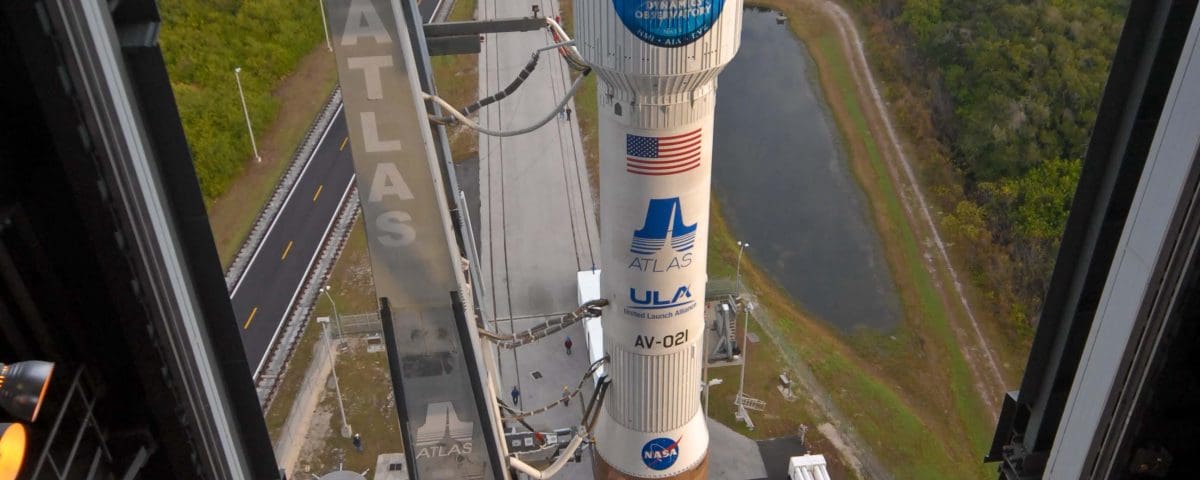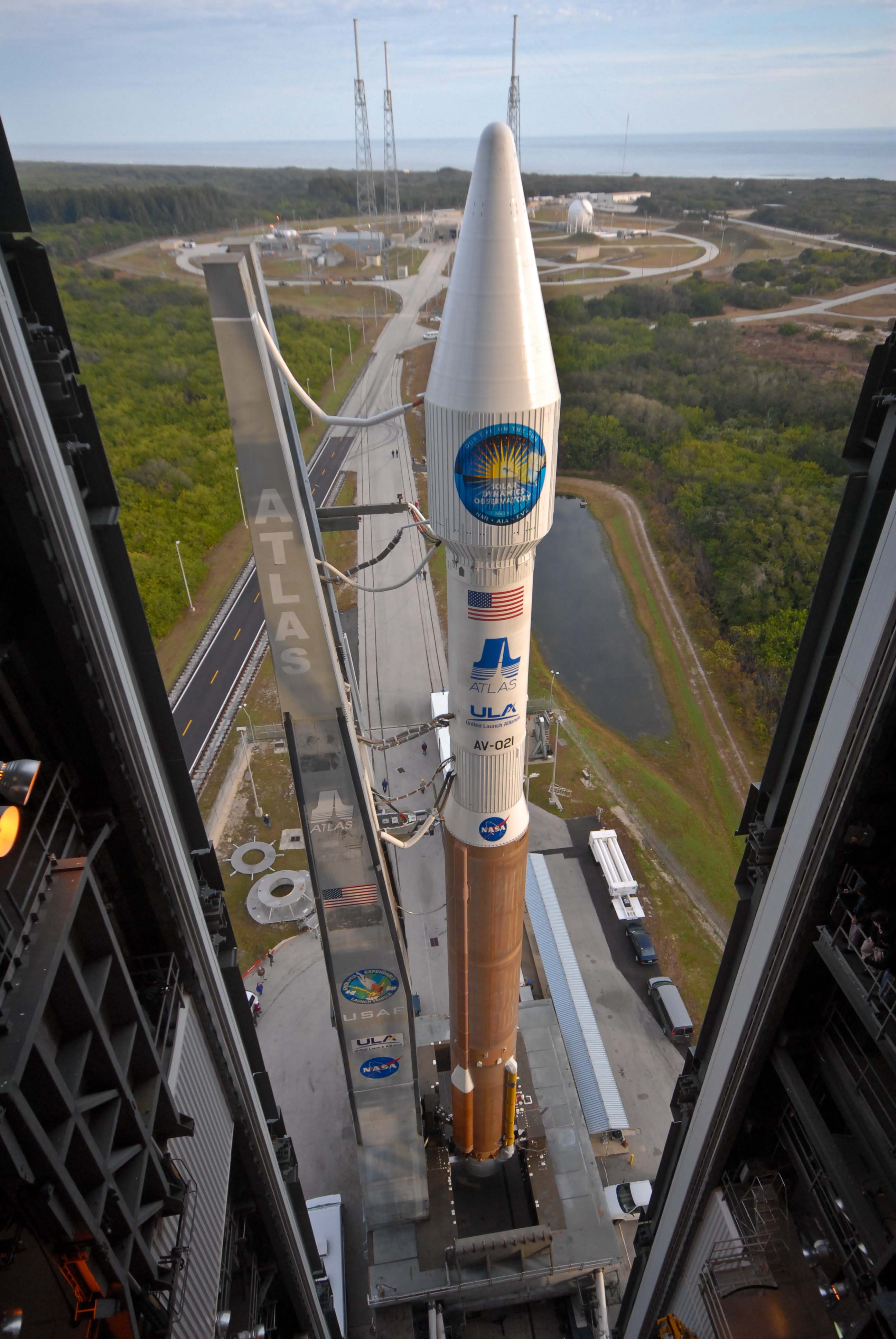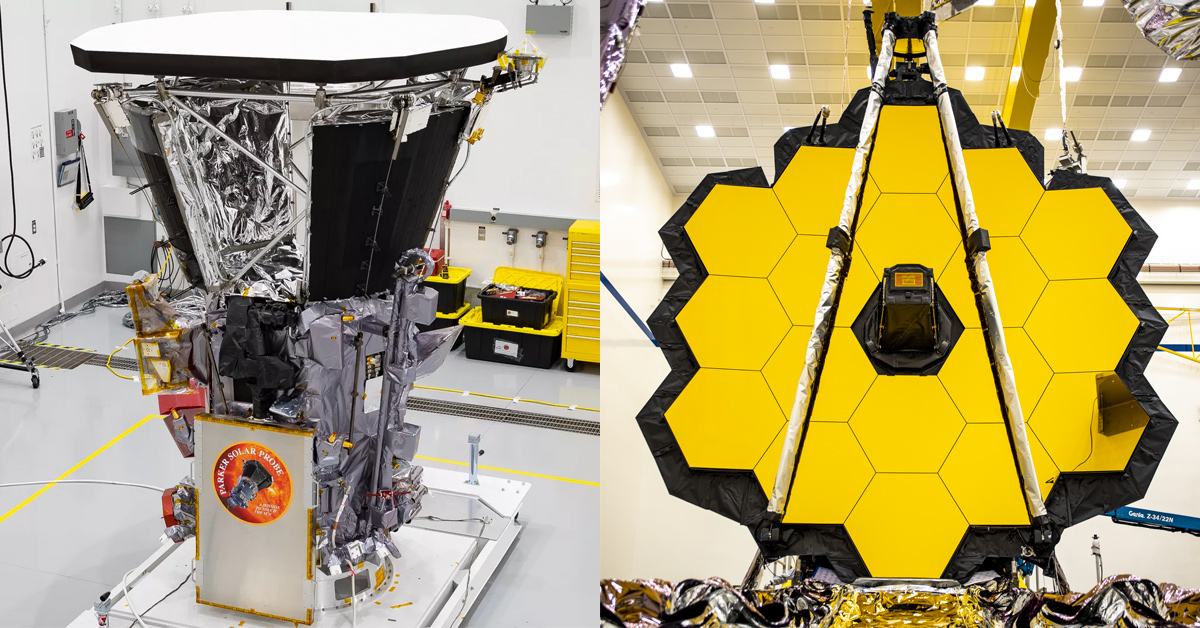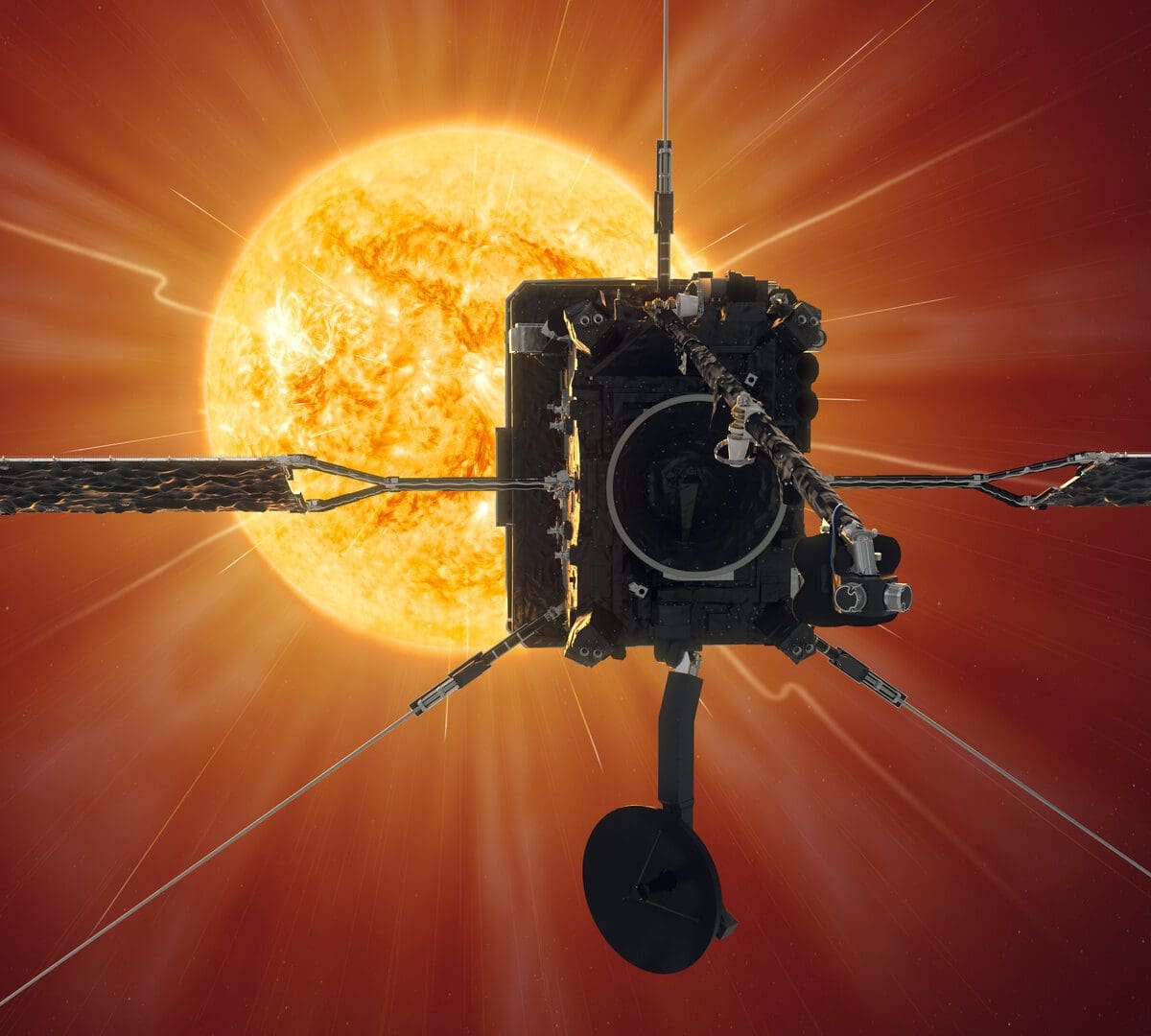
Getting out of Washington DC was not going to be easy. The city was bracing itself for the biggest snowstorm in almost a century over the weekend.
The launch of the Solar Dynamics Observatory (SDO; the first mission from NASA’s Living With A Star program) wasn’t scheduled until the following Tuesday at the earliest but I really wanted to get to the Kennedy Space Center in Florida in time for the last ever night launch of the space shuttle, which was scheduled for the small hours of Sunday morning.

AV-021 SDO Rollout to Pad
Any delay in launching the shuttle would also delay SDO as it takes about 48 hours to reset the systems at the Cape after a launch.
As it happened the shuttle was delayed until Monday morning (which pushed SDO back to Wednesday morning).
Due to the weather and the thousands of stranded travelers, the earliest flight I could get would only get me in on Monday evening. “Too bad”, I thought, but as long as I still got to witness the launch of SDO (which will view the Sun at 10 times the resolution of HD TV) I’d be happy.
I made it to Florida and Wednesday morning came soon enough. Myself and some other friends from Goddard Space Flight Center met up at Kennedy, acquired some coffee and took our seats on the bleachers outside the building that houses the old Saturn V rocket that was used during the Apollo era. It was a brisk morning; sunny and partly cloudy, but all the talk was about the wind.
We were told at the mission briefing the previous day that the wind needed to be below about 20 mph (depending on the direction) in order to proceed with the launch. This is because the rocket that was to carry SDO into orbit (an Atlas V) can only compensate for a certain amount of lateral wind speed before it veers off course and has to be blown up. There were to be three attempts during the one-hour window (from 10:26-11:26 EST), with the forecast looking more favorable nearer the end of the window.
The countdown was already underway when we took our places. Updates from mission control were coming in over the loud speakers at various intervals, mostly about the weather. When the clock reached the 4-minute marker it stopped for the obligatory 10-minute hold to carry out last minute checks on the systems, and the weather. The tension was palpable. After two and half years of set backs and delays everyone was anxious to get this bird in the air, but with winds gusting to 25 mph it wasn’t looking good.
The time of the first attempt came and went without much fanfare, as did the second. Only one chance left today or else we would have to wait to try again tomorrow. Winds did seem to die down as predicted and at the end of the 10 minute hold, flight control ran down the ‘Go-’/’No Go-’ for launch list.
All systems were working fine and the weather complied! We were go for launch! The clock started ticking… 4:00… 3:59… then it stopped. Wait; what!? A synchronized groan came out from the crowd almost before the cheering had subsided. Despite getting the go for launch from mission control, the onboard sensors on the Atlas V picked up strong gusts and aborted its own launch.
Down, but not out, we trundled back to the buses that took us back to the visitor center. There was still tomorrow…
(Ryan Milligan)




